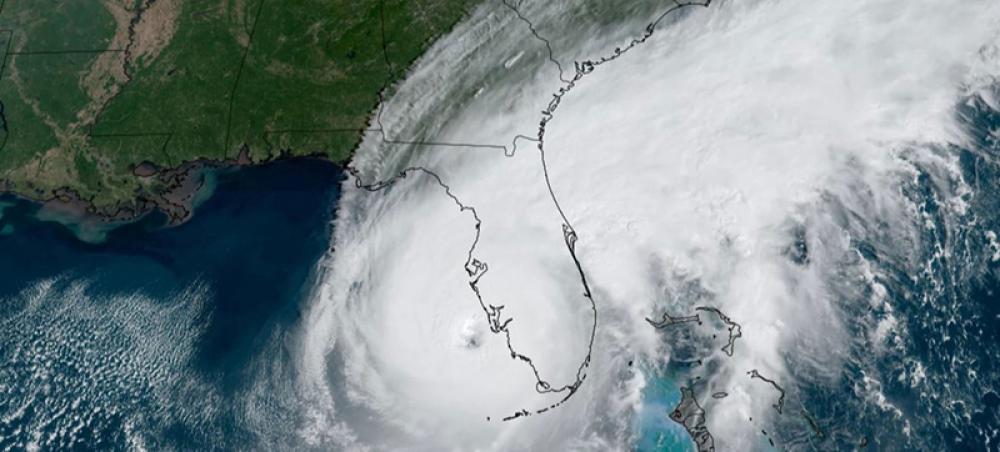Just Earth News | @justearthnews | 27 May 2023

Image: NOAA
New York: The United States’ National Oceanic and Atmospheric Administration (NOAA) predicts “near-normal hurricane activity” in the Atlantic this coming storm season, said the UN weather agency on Friday, forecasting between five and nine major storms that could become hurricanes.
The US National Hurricane Center acts as WMO’s Regional Specialized Meteorological hub, based in Miami, Florida.
There is a 40 per cent chance of a near-normal season, 30 per cent possibility of an “above-normal season”, and also 30 per cent of a below-normal season, according to forecasters with the Climate Prediction Center.
The hurricane season covering the Atlantic region, including the Caribbean, Gulf of Mexico and US east coast, lasts from 1 June to 30 November.
NOAA forecasts between 12 and 17 total named storms, which means winds of at least 63 kilometres per hour, or 39 miles per hour.
Up to 4 major hurricanes
Among the potential hurricanes, it forecasts one to four “major hurricanes” – categories three to five – with winds of at least 178kmh, or 111mph.
WMO said that NOAA has “a 70 per cent confidence in these ranges.
“It is expected to be less active than recent years, due to competing factors - some that suppress storm development and some that fuel it - driving this year's overall forecast for a near-normal season, according to NOAA”, WMO reported in a press release.
The agency reminded however, that it takes just one landfalling major hurricane to set back years of growth and development.
Statistics presented to the ongoing World Meteorological Congress showed how Small Island Developing States suffer disproportionately in terms of both economic impact and the human toll.
Early warning imperative
For instance, Hurricane Maria in 2017, cost the Caribbean island nation of Dominica, a staggering 800 per cent of its Gross Domestic Product.
“Between 1970 and 2021 tropical cyclones (the generic term which includes hurricanes) were the leading cause of both reported human and economic losses worldwide, accounting for more than 2,000 disasters”, said WMO.
However, the death toll from deadly storms has fallen from around 350,000 in the 1970s to less than 20,000 in 2010-2019. Reported economic losses in 2010-2019 were at $573.2 billion.
'Major killers'
“Tropical cyclones are major killers and a single storm can reverse years of socio-economic development. The death toll has fallen dramatically thanks to improvements in forecasting, warning and disaster risk reduction. But we can do even better,” said WMO Secretary-General Prof. Petteri Taalas.
“The UN Early Warnings for All initiative seeks to ensure that everyone has access to warnings of life-threatening winds, storm surge and rainfall in the next five years, especially in Small Island Developing States which are on the frontlines of climate change,” he said.
Name that storm
An average Atlantic hurricane season has 14 named storms, seven hurricanes and three major hurricanes.
In total, the 2022 Atlantic hurricane season produced 14 named storms, of which eight became hurricanes and two were major hurricanes (Ian and Fiona). Both 2020 and 2021 were so active that the regular list of rotating names was exhausted.
After three hurricane seasons with a La Niña, there is a high potential for El Nino to develop this summer, which can suppress Atlantic hurricane activity. El Nino’s potential influence on storm development could be offset by favorable conditions local to the tropical Atlantic Basin.
New model boosts prep time
“With a changing climate, the data and expertise NOAA provides to emergency managers and partners to support decision-making before, during and after a hurricane has never been more crucial,” said NOAA Administrator, Rick Spinrad.
“To that end, this year we are operationalizing a new hurricane forecast model and extending the tropical cyclone outlook graphic from five to seven days, which will provide emergency managers and communities with more time to prepare for storms.”